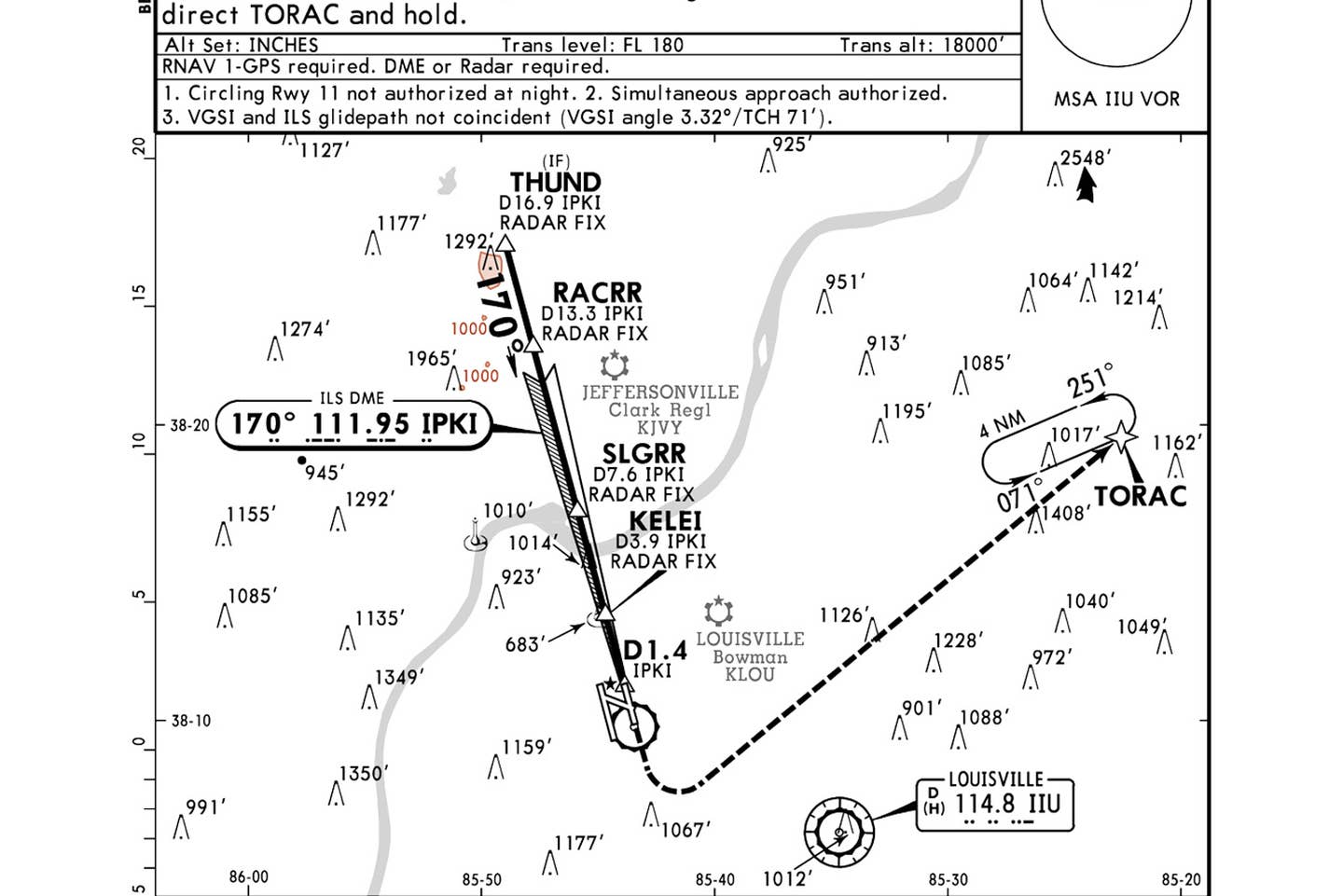We Go Through the Notes on Terminal Procedures Publications
What are the different types of notes found on an instrument approach chart, and where do I find them?

Louisville ILS or LOC Runway 17L [Courtesy Jeppesen]
What are the different types of notes found on an instrument approach chart, and where do I find them?
Instrument approach charts, be they Jeppesen or FAA terminal procedures publications (TPPs), contain notes that tell the pilot what to do—such as missed approach instructions—and what not to do, such as "circle to land at night not authorized" by using the designation NA.
The information on both forms of approach charts starts at the top with the name of the approach and the airport it services, then radio frequencies, missed approach instructions, and special notes about this approach.
The so-called fine print, often called out using an asterisk, tells the pilot to adjust their procedures given certain circumstances, such as a piece of ground-based navigational equipment out of service, or when a piece of information, such as the altimeter setting, is unavailable.
When a “T” in a black triangle appears in the notes section of the instrument approach chart, it signifies the airport has IFR takeoff minimums and/or departure procedures.
When a triangle containing an “A” appears in the notes section, it signifies the airport has non-standard IFR alternate minimums.
Think of those letters as the "Trouble T" and "Non-standard A.”
When using Jeppesen TPPs, you find the takeoff and alternate information on page 10-9. Page 10-9 also shows heading, communications, airport plan view, and additional runway information.
When using the FAA TPPs, the information on non-standard takeoff and departure minimums and non-standard IFR alternate minimums is in the front of the approach binder in section L.
On FAA approach plates, the information about runway distances, and airport lighting is at the bottom of the approach plate and is shown with sort of a pictogram, like IKEA furniture instructions.
The plan view of the approach plates has a bird's-eye-view of the approach and gives details, such as the height of obstacles near the approach.
The profile section notes contain information about altitudes and glide-slope intercepts.
Is helpful to use an acronym to make sure you have all the pertinent information from an approach plate before you use it. Many pilots use MARRTHA:
- Missed approach—memorize first two steps
- Approach type and weather needed for landing
- Radio frequencies necessary—ATIS, approach, tower or unicom
- Radials off a VOR that may identify fixes on the approach
- Time if it is a timed approach, utilizing the aircraft's projected ground speed
- Heading—when on final approach
- Altitude—how low can the aircraft legally and safely be—check that profile view
Do you have a question about aviation that's been bugging you? Ask us anything you've ever wanted to know about aviation. Our experts in general aviation, training, aircraft, avionics, and more may attempt to answer your question in a future article.

Subscribe to Our Newsletter
Get the latest FLYING stories delivered directly to your inbox






